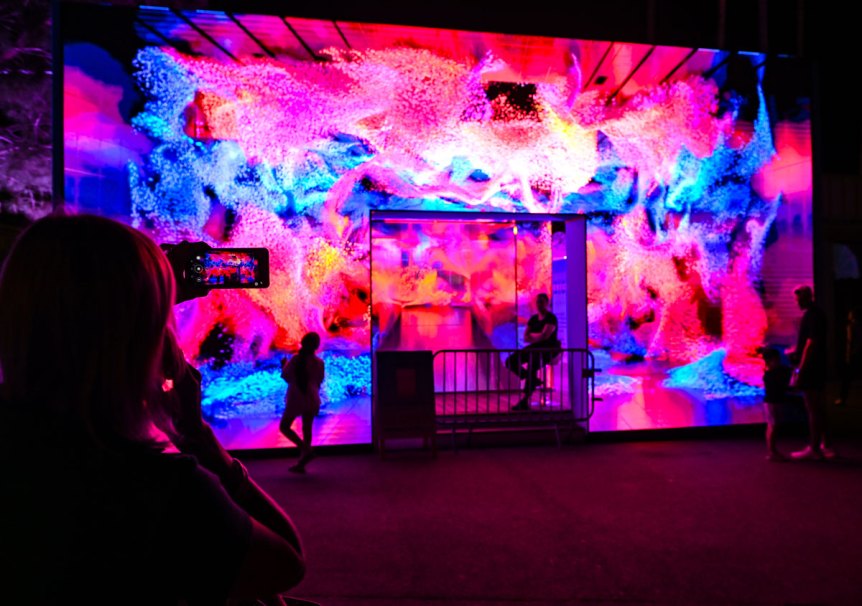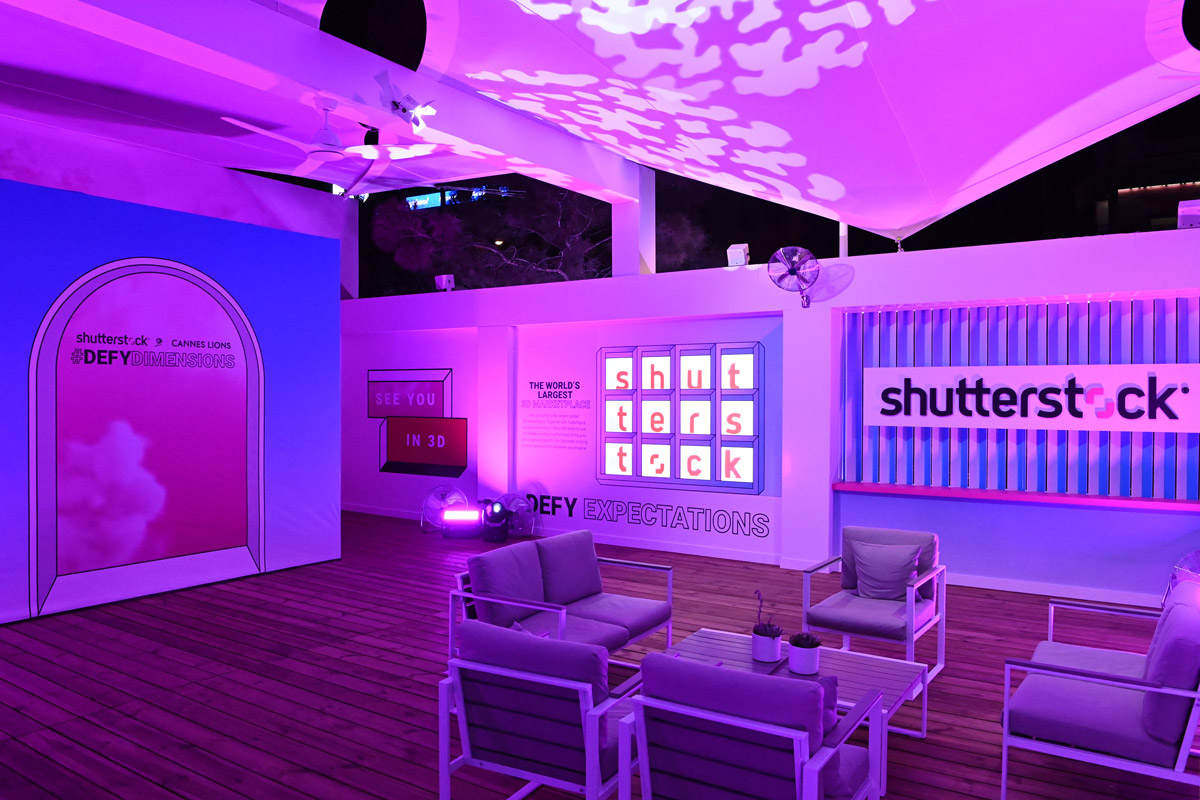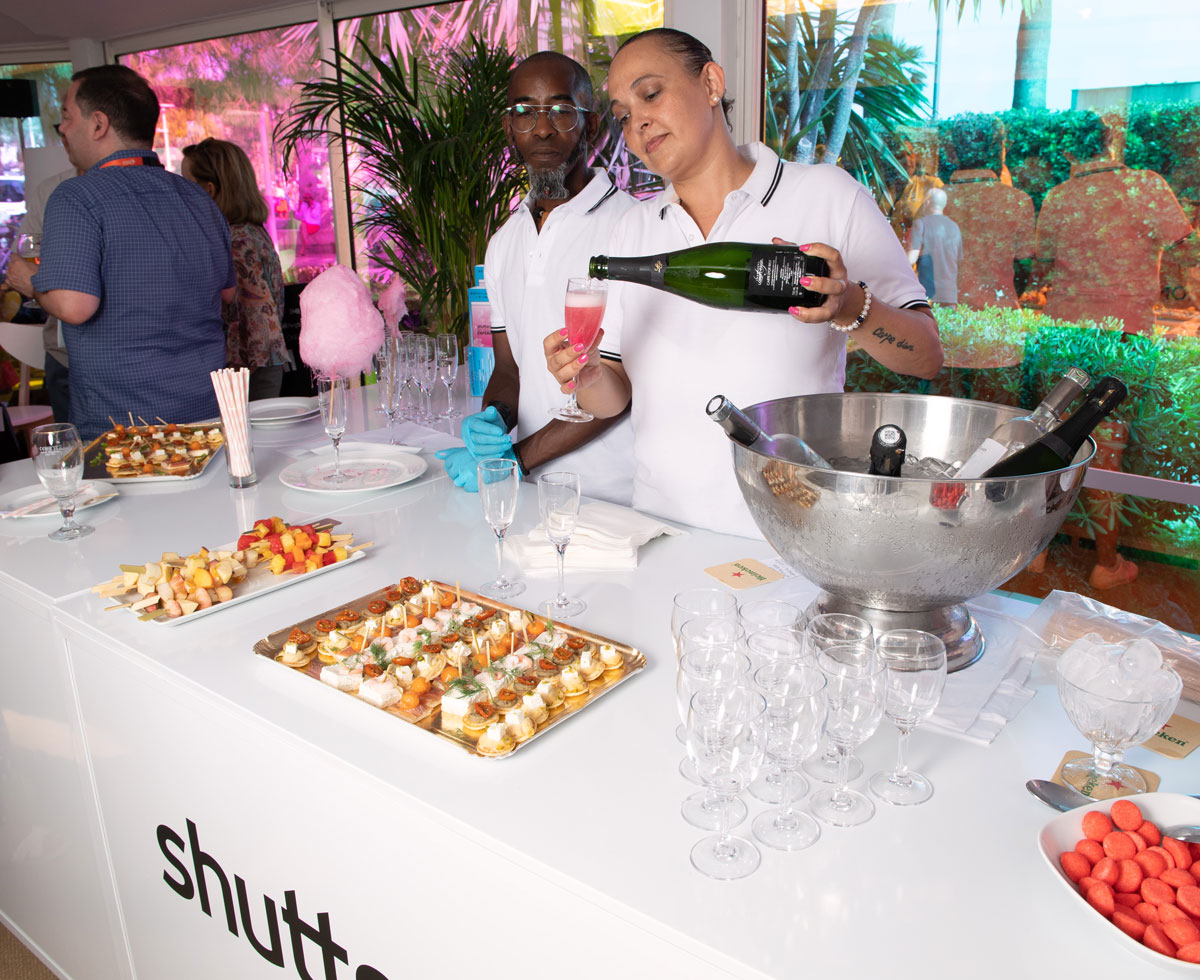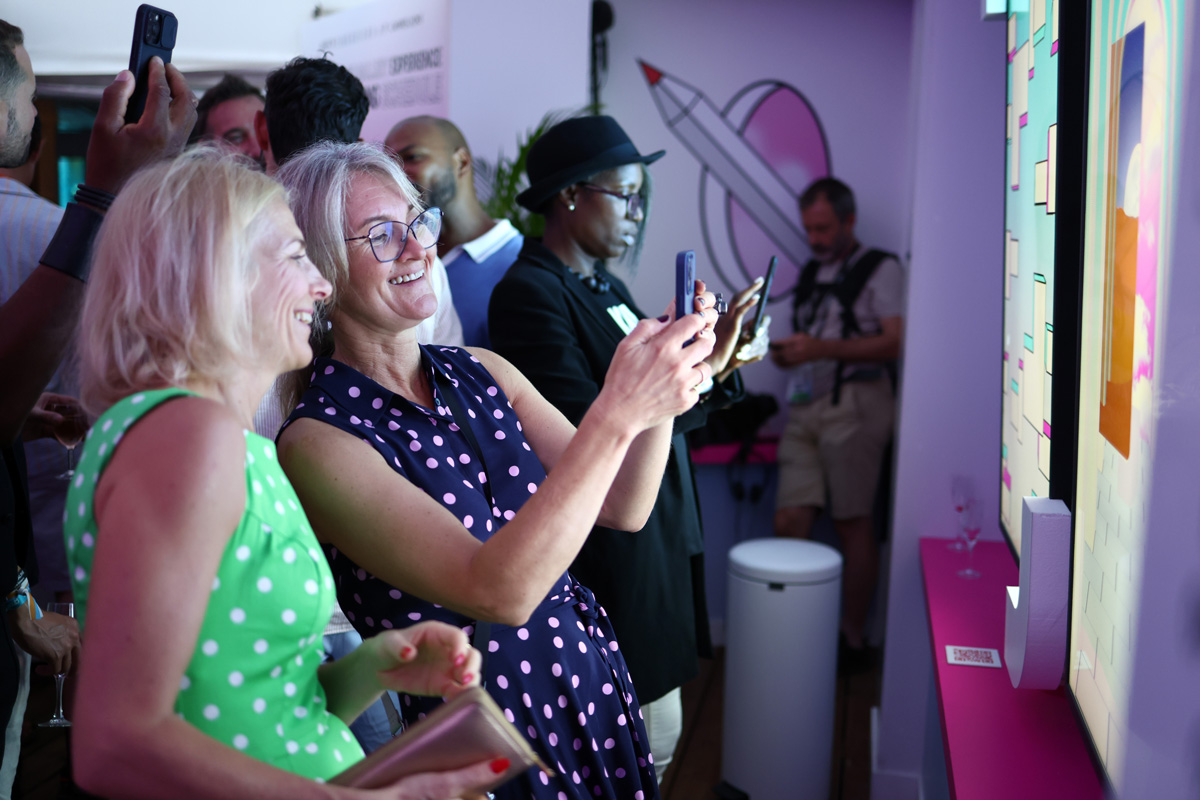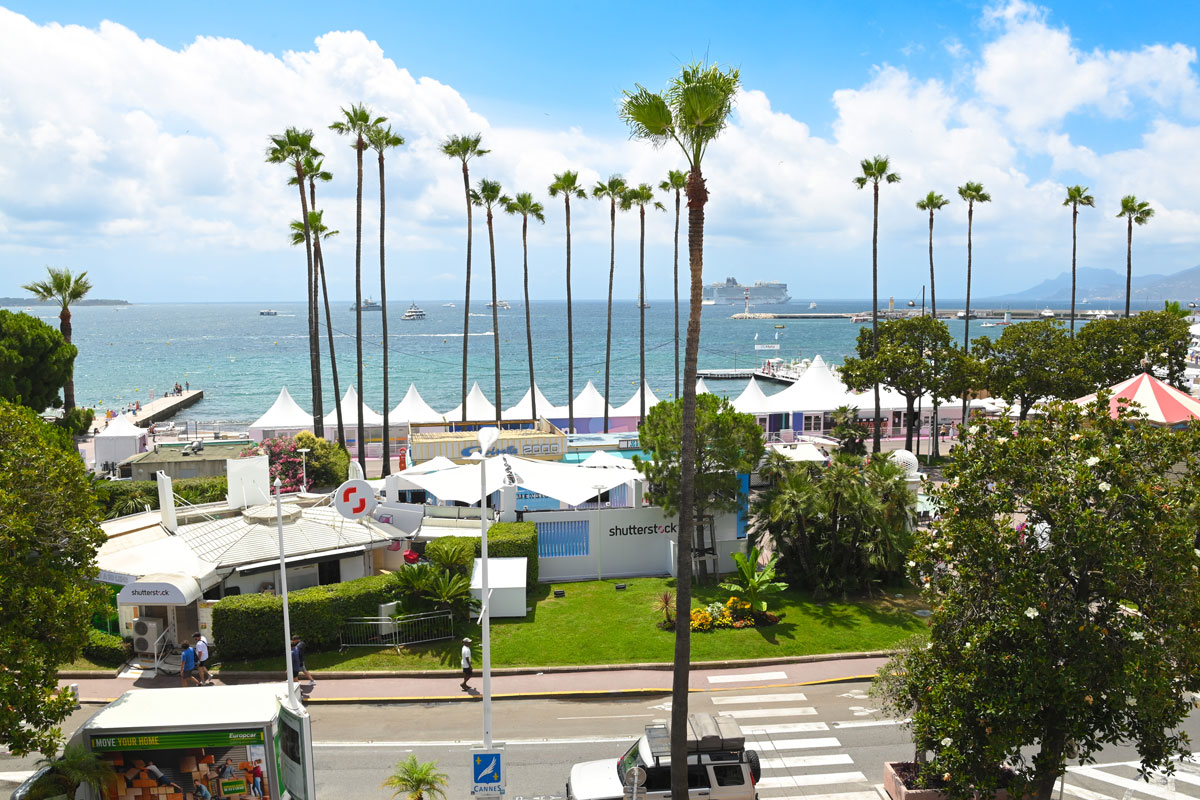You’ve done your research, approved budgets, and applied to become an exhibitor at your industry’s biggest trade show. Everything is perfect — except when the day comes, nobody is interested in your booth. Why?
The answer is simple: You’ve probably not made it engaging enough. As brands and agencies lean into marketing for Web3 and the metaverse, it’s become increasingly crucial to plan in-person events that are as interactive as your digital presence. With an interactive installation, you’ll be able to stand out from the crowd. That’s why we’ve put together our five steps for a showstopping interactive installation below, developed after our experience creating the Shutterstock booth highlighting 3D to an audience of over 7,000 at this year’s Cannes Lions.
Our focus for the installation was our 3D capabilities that came with the acquisition of TurboSquid in February of 2021. From augmented reality experiences to take-home NFTs, Shutterstock “made its mark” with the “best exhibit at Cannes” this year according to Ad Age and What’s New in Publishing. Read on to make your next event more immersive than ever before.
Step 1. Plan to attract from a distance
When planning your event, always consider not only how the booth will look to attendees walking past it, but also how it can attract those on the other side of the trade show floor. At Cannes, we decided to collaborate with the team at Possible to do this.
“It was a unique challenge coming up with a design that could be striking from far away, yet continue to evolve and reveal additional detail as visitors came closer,” says Co-Founder at Possible, Roy Chung. “Our solution was to build a custom 3D video wall entrance. This would attract attendees from far away, and give those who came into the booth the feeling of walking into another dimension.”
The video wall entrance was made up of 82 ROE CB3 Carbon series LED tiles at a pixel pitch of 3.7mm. These were then rigged to a ground-supported truss structure comprised of a 12” box truss. To account for the heat of the screen itself and the very warm weather that week, the wall was internally cooled with an external air conditioning unit. Signaling was run via fiber and video processing was run via the Dataton Watchpax 60 Hardware.
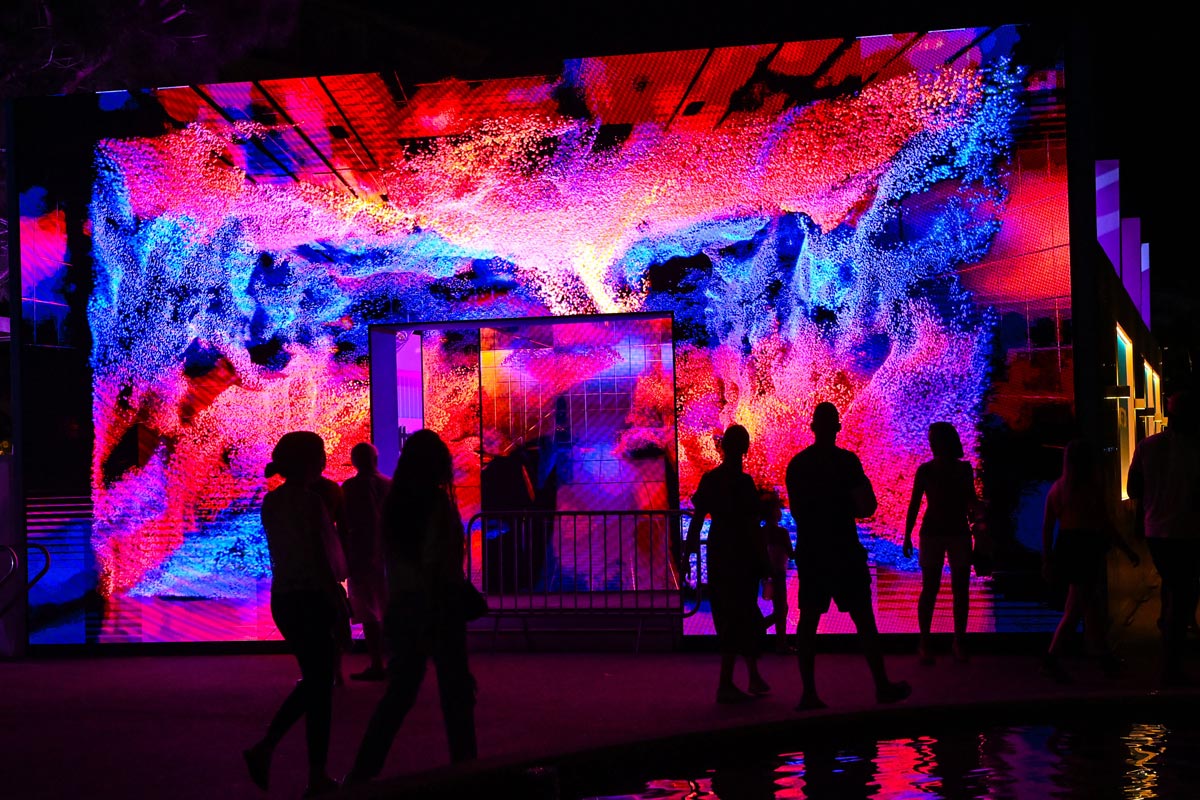
Step 2. Offer a hands-on look at your products
Of course, attracting people to your booth isn’t enough for an interactive experience. Attendees need to engage with what’s inside, too. For many businesses, this is easy: You simply need to provide a first-hand look at your new products.
But what if what you offer is purely digital? No problem. You just need to be a bit more creative with technology. At Cannes, we did this by building a 3D vending machine. Displayed on the booth’s vivid massive touchscreen, the vending machine allowed anyone to experience a sample of the amazing variety of all of TurboSquid’s one million ready-to-use 3D models. Each model could be spun around and explored in every detail.
Step 3: Always provide a use case
You can create the coolest-looking product in the world — but that means nothing unless your customers understand how they’ll use it. That’s why it’s crucial to provide a use case for everything attendees can get hands-on experience with at your booth.
At Cannes, we did this using augmented reality filters built with the creative team at Lenslist. All guests needed to do was to scan one of the booth’s many QR codes with their phone to interact with a series of AR experiences made using TurboSquid’s 3D models. These experiences could then easily be posted to instagram. One of them, for example, allowed anyone to take a selfie surrounded by 3D cotton candy: A treat that was also part of our specialty champagne cocktail given to visitors.
Lifetime stats show that the effects were opened over 44,000 times and captured 3,900 times, with a total of 23,500 impressions — further proving how important it was to not only show our 3D models, but give an example of how they can be used.
Step 4. Give your audience something to bring home
How do you assure you’ll be remembered for weeks after an event? One surefire way is to give your booth visitors something they want to bring home. At Cannes, we did this by hiring world-renowned photographer, David Fisher – who frequently photographs A-list celebrities at the Oscars, Golden Globes, and Baftas to take a portrait photo of booth attendees.
Once the photographs were taken, our creative team at Shutterstock Studios then turned each of them into unique NFTS that could be used in anything from a metaverse to a virtual production project.
Step 5. Have something to say
Last but not least, the last step to creating an interactive installation is to always try to have something fun to say or unveil to the industry to really make your investment work hard.
Of course, it’s difficult to compete with massive booths and celebrity acts, but if you complete all the other steps in this article you’re already going to have a final result that looks fantastic. If you also have a story to go with everything you’re showing, that’s the final key to creating truly immersive and unforgettable experiences that visitors will remember for years to come.

